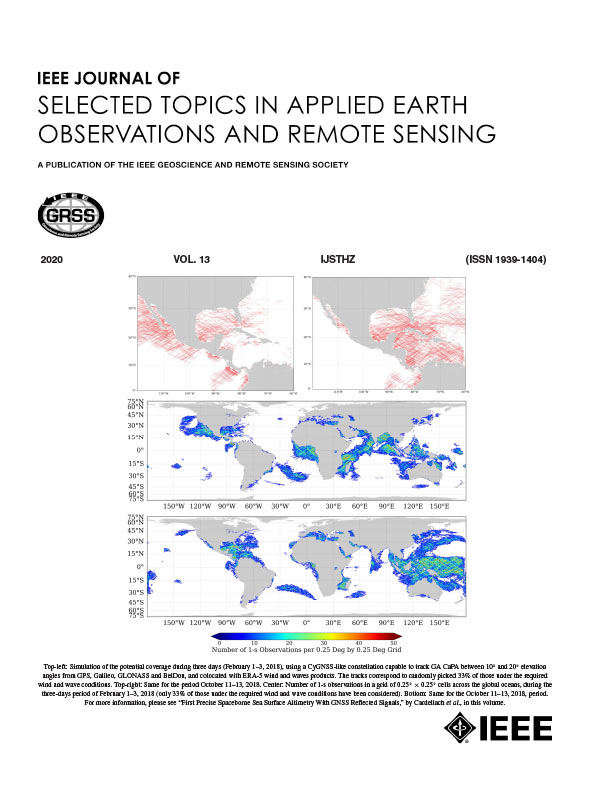多尺度视觉变换中的空间缩减注意力用于地表水-陆地界面区的分割
IF 4.7
2区 地球科学
Q1 ENGINEERING, ELECTRICAL & ELECTRONIC
IEEE Journal of Selected Topics in Applied Earth Observations and Remote Sensing
Pub Date : 2024-09-06
DOI:10.1109/JSTARS.2024.3455891
引用次数: 0
摘要
水域分割对于防洪、水资源管理和城市规划等应用非常重要。然而,如何在遥感卫星图像中准确识别水陆交接区和划定水陆边缘对传统的分割方法提出了巨大挑战。本研究旨在提高分割的精确度,尤其是在识别水陆交界区方面,同时降低计算需求,以便在边缘设备上进行实时分析。本文在多尺度视觉变换框架内引入了一种新颖的空间还原注意力(SRA)机制,该机制能够熟练捕捉局部和全局特征。所提出的多尺度多头关注机制通过多尺度投影和 SRA 得到增强,有助于从各种感受野中学习特征,从而提高计算效率。多光谱图像和颜色属性的双分支通道集成大大提高了模型的识别能力。在水体分割的评估中,所提出的方法明显优于先进模型,平均交叉比联合提高了 10.1%,平均 F1 分数提高了 6.7%。这一表现强调了该模型在准确识别水-陆交界区方面的功效,并凸显了其在提高卫星图像中水域分割的准确性和效率方面的潜力。本文章由计算机程序翻译,如有差异,请以英文原文为准。
Spatial Reduction Attention in Multiscale Vision Transform for Surface Water–Land Interface Zone Segmentation
Water segmentation is important for applications in flood prevention, water resource management, and urban planning. The accurate identification of water–land interface zones and the delineation of edges between water and land in remote sensing satellite imagery, however, present significant challenges for traditional segmentation methods. This research aims to enhance the precision of segmentation, particularly in identifying water and land interface zones, while also reducing computational demands to enable real-time analysis on edge devices. This article introduces a novel spatial reduction attention (SRA) mechanism within the multiscale vision transform framework, which is proficient at capturing both local and global features. The proposed multiscale multihead attention mechanism, enhanced with multiscale projection and SRA, aids in learning features from various receptive fields, thereby increasing computational efficiency. The integration of dual-branch channels for multispectral imagery and color attributes significantly improves the model's recognition capabilities. In the evaluation of water segmentation, the proposed method significantly outperforms advanced models, achieving a 10.1% improvement in mean intersection over union and a 6.7% increase in mean
F
1-score. This performance underscores the model's efficacy in accurately identifying water–land interface zones and highlights its potential in improving both the accuracy and efficiency of water segmentation in satellite imagery.
求助全文
通过发布文献求助,成功后即可免费获取论文全文。
去求助
来源期刊
CiteScore
9.30
自引率
10.90%
发文量
563
审稿时长
4.7 months
期刊介绍:
The IEEE Journal of Selected Topics in Applied Earth Observations and Remote Sensing addresses the growing field of applications in Earth observations and remote sensing, and also provides a venue for the rapidly expanding special issues that are being sponsored by the IEEE Geosciences and Remote Sensing Society. The journal draws upon the experience of the highly successful “IEEE Transactions on Geoscience and Remote Sensing” and provide a complementary medium for the wide range of topics in applied earth observations. The ‘Applications’ areas encompasses the societal benefit areas of the Global Earth Observations Systems of Systems (GEOSS) program. Through deliberations over two years, ministers from 50 countries agreed to identify nine areas where Earth observation could positively impact the quality of life and health of their respective countries. Some of these are areas not traditionally addressed in the IEEE context. These include biodiversity, health and climate. Yet it is the skill sets of IEEE members, in areas such as observations, communications, computers, signal processing, standards and ocean engineering, that form the technical underpinnings of GEOSS. Thus, the Journal attracts a broad range of interests that serves both present members in new ways and expands the IEEE visibility into new areas.

 求助内容:
求助内容: 应助结果提醒方式:
应助结果提醒方式:


